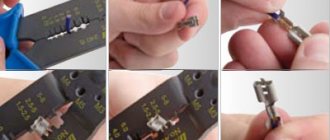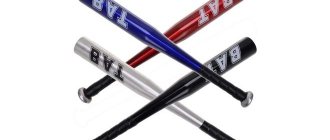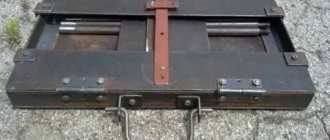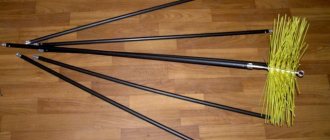When going on a hike in the forest, we pack everything we need with us. If we are planning lunch, then we think about how we will make a fire. The process of packing for a long trip is different from a short one. In a couple of weeks or even a month, a tourist can get caught in rain, snow, or hail.
It is also impossible to exclude the occurrence of emergency situations when the usual matches run out and the lighter is lost. In this case, flint will come to the rescue. The article will discuss: what flint is, what it consists of, and how to make tinder.
What is flint
This is a special invention for striking sparks and starting an open fire. Today, no one can answer for sure how man began to strike sparks from stones or by rubbing wooden sticks, but these steps became fundamental in the process of inventing the modern tourist option. It was in greatest demand in the 18th-19th centuries, when matches were invented.
Today this device is common among tourists, travelers, geologists, speleologists, archaeologists and scientists whose work is related to travel. And this is not surprising. The device has many advantages:
- does not get wet, does not discharge, is always ready for work;
- does not depend on weather conditions;
- suitable for times when fine motor skills are difficult (frost, stress, bulky gloves and mittens);
- easy to care for;
- unlimited storage time, and the rod is enough for more than several hundred fires.
Despite the positive aspects, it is important to consider the nuances:
- when the components rub, only sparks are formed, but not fire;
- the need for training and having at least minimal experience in how to make a fire using a flint.
Advantages of flint
A long stay away from civilization is fraught with various troubles. Matches can get damp or simply run out, a lighter can break or run out of flammable charge. Therefore, it is better to include a flint in a tourist’s kit as a backup option.
- It doesn't need recharging.
- Not afraid of rain, cold, heat and moisture.
- If they get wet, all components can be dried and reused.
- Any component can be replaced with something at hand.
In the rain, using a flint to ignite a flame is more difficult than using matches or a lighter, but it is still possible, as practice proves.
Types of flint
In the 18th century, it consisted of an iron rod and flint (a solid mixture of rare earth minerals). Sparks arose at the moment of their friction. Over time, technology improved and various metal alloys were invented that ignited much more easily.
If we consider modern models, there are 2 main types:
- Manual - in order to light a fire you will need to use both hands.
- Semi-automatic is an option mainly for beginners. The design is made in such a way that only one hand is needed to create sparks.
- Tactical - they are included in the equipment of soldiers.
Lighters can be classified as the simplest types of semi-automatic flint.
How to make a flint?
Experienced hunters and fishermen know all the advantages that a good flint has. Prices for quality products in stores are high, but you can make a decent chair with your own hands. To do this you will need a small set of materials, skillful hands, a little free time and desire. To work you need to prepare:
- ferrocerium rod;
- a tube of any metal of such size that the rod can fit into it;
- nuts and hollow threaded tubes;
- cartridge case, caliber 32;
- a small piece of blade for cutting metal;
- sandpaper;
- beautiful lace;
- glue "Moment";
- soda;
- file;
- scissors;
- knife.
Manufacturing:
- You need to screw a decorative washer onto a metal tube on one side, and a nut with internal thread on the other, and secure it with glue with the addition of soda.
- A tube with an external thread 1 cm long should be attached to the rod on one side and screwed onto a nut in the middle; it will act as a limiter. It is necessary that the rod fits easily into the tube and screws into the washer at its end.
- The armchair is cut out of a piece of metal; it should be a small rectangle, approximately 5X50 mm. It should be secured inside a tube with an external thread.
- The sleeve must be cut into two equal parts.
- Screw the chair into the lower half so that part of the threaded tube remains outside. This thread is screwed on the extreme side of the rod.
- The homemade flint is ready. You can add it with a ring for attaching it to a keychain along with the keys.
What does flint consist of?
There are only three elements that make up flint. But every part is irreplaceable:
- chirkalo - often it is flint, pyrite or a simple metal plate;
- armchair - a rod from which sparks are struck;
- tinder is a highly flammable material that should be exposed to sparks from the chair. Without it, it is impossible to make a fire.
Kresalo
This is a small metal pyrophoric element. Spontaneous combustion occurs upon impact with flint. At this moment, the small chips that form are heated. Interaction with oxygen promotes inflammation.
Kresalo.
Initially, iron was used for the chair. However, inertia and rigidity complicated the task. In the 20th century, an alloy of cerium, lanthanum and iron was invented. It is called ferrocerium.
"Flint"
This is a small piece of material that is harder than a chair. When struck, the flint scratches it and small chips are formed. The presence of sharp teeth greatly simplifies the process of striking sparks.
Initially, it was made from the breed of the same name and carefully monitored the quality. There should be no cracks on it to avoid getting wet.
Over time, when alloys for making chairs were invented, the requirements for flint decreased. Today, hardened high-carbon steel is used.
Tinder
This is a highly flammable material. When sparks formed at the moment of impact between silicon and carbon, as well as when oxygen interacts, it begins to smolder or immediately ignite, depending on the quality.
What is the flint made of?
The materials from which modern flint is made are rare metals. A pyrophoric alloy is a special substance that can spontaneously ignite and is used to create a rod for striking sparks. When understanding the question of what flint is made from, it is necessary to remember the metals that were used before: nickel, iron, pyrite, cobalt and lead. Modern ignition devices contain ferrocerium, which is complemented by various metals and works well together with specific alloys:
- with steel plates;
- with magnesium seats;
Operating principle of flint
As has already become clear, the flint itself does not produce an open fire, as is possible when using matches or a lighter. When the striker and the steel rub, a bunch of sparks are formed that ignite the tinder.
How to properly light a fire with a flint
The algorithm for using flint is as follows:
- Make sure all elements are dry. If moisture gets on the instruments, they must be wiped and dried. Special attention is paid to tinder - if possible, it is replaced.
- Prepare the kindling.
- If the rod is magnesium, then you need to scrape off some shavings from the soft side and combine them with tinder. Next, turn it with the hard side and hit it down with the hammer so that the sparks hit the tinder. Experienced tourists recommend first making a couple of short movements at the bottom, and then one more dramatic one.
- When a smoldering coal appears, the tinder is combined with kindling. When the fire dies down, you can add more twigs and start building a fire.
When to use flint
When going on a hike, everyone probably stocks up on matches and lighters. They make it very easy to start a fire. Flint is an indispensable thing on a hike. When the first two options fail or get wet by rain, an old invention comes into play. It is enough to dry the flint for igniting the fire and the wood, find and prepare the ignition for the fire.
Magnesium flint has proven itself to be the most advantageous - it is practically insensitive to temperature conditions and humidity.
Note! Another name for magnesium flint is magnesium flint . The combustion temperature reaches 2200 degrees, that is, ignited shavings can set fire to almost any material. Even if there is a strong wind outside, the shavings flare up instantly and do not go out, occupying the tinder.
It can also be used as a signal quality if you are with a company in the forest. The flashlight may fail, and the resulting sparks can be seen from afar. However, in this case you need to be extremely careful so as not to set fire to the dry wood in the forest.
How to make tinder for flint and steel?
A camper's fire starting kit contains several unchanged components. A striker, tinder and a firewood are all that a traveler needs to light a fire without matches and cook dinner, dry things and keep warm. A material that ignites easily is necessary for a spark to turn into a flame. High-quality tinder begins to smoke as soon as the first spark hits it. It’s easy to make tinder for flint yourself; it’s suitable for these purposes:
- dried pieces of fungus - tinder fungus;
- burnt natural fabric without synthetic additives from linen or cotton;
- wood coals;
- dry pine needles;
- dry chopped grass.
Making flint
It’s better to make flint with your own hands at home. You will be able to study the features and nuances. When traveling or in emergency situations, it can be difficult to obtain the necessary elements.
And it is almost impossible to create an analogue of a modern tourist version of factory production in field conditions.
Main parts of flint
A homemade flint consists of two main elements: a flint and a steel, the interaction of which produces high-temperature sparks. The campfire set for starting a fire consists of:
- The armrest is a steel plate. For its manufacture, hardened high-carbon steel is used, which ensures high strength of the material.
- Chirkalo is a natural mineral stone endowed with pyrophoric properties, i.e. it is easily flammable. When friction with the steel, small chips are formed, which ignite when interacting with oxygen.
- Tinder is an auxiliary part. This is ignition material.
What to make flint from at home
There are several options for making flint at home:
- The screwdriver is sawed in half. Using a drill, a hole is made on one side and silicon is placed. One edge should be sharp, and the smooth end will create sparks. Everything is attached with glue. The surface is treated with sandpaper. For convenience, you can make a handle.
- If you have an unnecessary lighter, you can take the silicon wheel from it. It is fixed to a wooden clothespin using a self-tapping screw. An alternative is to use a split pencil. A flint from the same lighter is inserted inside, and then a wheel.
- Magnesium flint is made from a piece of magnesium. The soft side is needed for cutting chips. On the other hand, there is a flint or ferrocerium rod for cutting sparks, which ignites the chips.
How to make tinder for flint
The ignited tinder will allow you to start a fire. Suitable for production:
- burnt dry rags;
- dry grass or moss;
- pine needles;
- birch bark;
- flax fiber;
- sawdust or shavings;
- fluffed cotton wool or cotton;
- wax paper.
Tinder is often prepared at home, before going on a hike. Take a look in your clothes dryer and you'll likely find lint buildup from cotton fabrics. If not, then cut several pieces of fabric and put them in a metal can, cover the top with foil and make several small holes.
If you find yourself in nature, then tinder can be prepared from scrap materials.
The workpiece is placed on the fire for 10–15 minutes. When the smoke stops coming out, you can remove it. The result is highly flammable cotton charcoal.
Cotton wool is the same as cotton. Balls are rolled out of it and lubricated with Vaseline. Store them in an airtight container.
The simplest option involves using thinly sliced paper.
If you find yourself in nature, then tinder is prepared from scrap materials. Suitable for this:
- Birch or oak bark, or rather, a thin layer in the form of strips is removed from the inside. If you find birch bark, then it is permissible to use the upper layers.
- Cattail fluff.
- The core of a tinder fungus.
- Finely sliced bamboo fiber.
Flint: composition
Natural iron sulfide, or the mineral pyrite, is used as flint. When looking for silicon, you need to pay attention to the fact that the stone should be comfortable to hold with one hand, size, and also have a uniform surface without cracks. Pyrite must be dry. When a steel object hits a flint, sparks are formed, with the help of which the tinder is ignited with the further formation of fire.
The crosspiece is an object made of hardened steel with a surface that has many small notches. They are the ones who cut flint chips, which heat up and flare up when exposed to oxygen.
Tinder is a flammable fibrous material that ignites when struck by sparks. As a rule, this is vegetable cellulose, and it must be dry.
Main parts of flint
Even the most modern fixture has only three structural parts. Moreover, each element is responsible for performance and is irreplaceable:
- Chirkalo. This part may be flint, pyrite, or a plate of metal.
- Kresalo. A rod that serves to produce a spark.
- Tinder. A flammable material that is struck by a spark. It is impossible to build a full-fledged fire without dry tinder.
Kpecalo
You can use an alloy or pyrophoric metal. In the process of mechanical action, the hammer cuts out small chips on the flint. During cutting of metal, its temperature increases, and the chips, due to interaction with oxygen, begin to burn. This process has much in common with grinding products using a whetstone. Small shavings burst into flames right in the air and a column of sparks appears.
In the first flints, ordinary iron was used instead of pyrophoric metal. But such a material is very inert and has high strength, which reduces the possibility of sparks. Modern manufacturers use mischmetals to make chairs, and the most common is ferrocerium. This metal is an alloy of several types of iron.
Kresalo (left) and flint (right)
Kremen
Flint is a piece of material that is an order of magnitude stronger in hardness than the material used to make the chair. During the mechanical action of two parts, the first should leave scratches and form chips. The dimensions of the flint for igniting a fire should be such that the device can be easily held with one hand. For better sparkling, it is necessary to make sharp edges on the flint that will cut the chips.
In the first versions of flint, the natural mineral of the same name, which consists of amorphous and crystalline silica, was used as flint. It is important not to confuse the concepts of the structural part of a device and a natural mineral.
The silicon surface should not show any visible damage because the stone is considered very fragile. According to its structure, it should not exfoliate in order to prevent an increase in volume when moisture enters.
Silicon for flint
In addition, other minerals with a high degree of hardness, such as siliceous shale or quartz, could be used. Special mention should be made of pyrite. Due to the high degree of hardness required to strike sparks, this mineral is capable of independently reacting exothermically with oxygen, thereby significantly increasing the effectiveness of sparks for igniting a fire. For such interaction a temperature of about 1000 degrees is required. In combination with other high-hardness minerals, pyrite can be used as a stone.
Since manufacturers began to use hardened steel, the requirements for the hardness of the material for chairs have decreased significantly. You can make your own chair from a file or a piece of high-carbon steel
Useful tips
Any steel is suitable for producing sparks from the described device. The main thing is that it is doped. Even if it does not have high corrosion resistance, the only important thing is whether it produces enough sparks. Remember that using a knife blade as a cutting tool is not advisable. It fades and may become dull. This method should only be used in extreme cases.
A standard flint steel can successfully replace a small piece of hacksaw blade. You can do without flint, but it will definitely come in handy when traveling. If you are an avid hiker, get one. Moreover, even the cheapest model will cope with the task if everything is done correctly. Now you have received the answer to the question of what it is - flint.
Useful tips when working with flint
When working, you should follow some useful tips:
- You can make a spark with any steel. But preference should be given to alloy steel, which will produce more sparks and is not subject to corrosion.
- If you have any sharp tool at hand, except a knife, then you should use it to create sparks. The knife blade will quickly lose its functionality after such a procedure.
- When the manufacturer does not include a standard chair in the kit, you can replace it with a small piece of blade from a hacksaw. Or you should prepare a platform on the butt of the camping knife in advance.











